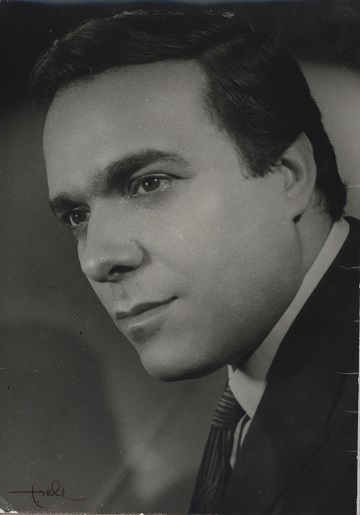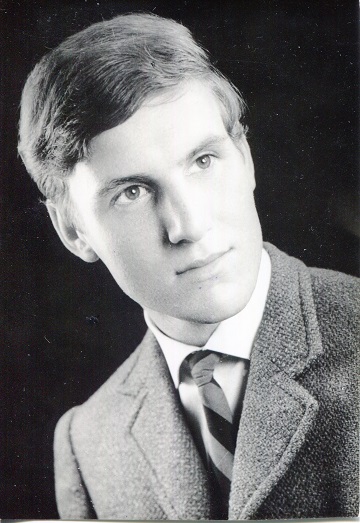Know more:
Francisco José
(N. 16 August, 1924 - M. 31 July, 1988)Francisco José Galopim de Carvalho was one of the most outstanding singers in the light music universe between the 50s and 70s. He developed part of his artistic career in Brazil, where he became a reference in Portuguese music.
He began to sing in public at high school parties in Évora and participated in revista theater plays in that city. He settled in Lisbon to study Civil Engineering, a course he did not complete, dedicating himself to musical activity and attending the Radio Artists Preparation Center of the Emissora Nacional (1948). Attending the Center allowed him to gain visibility in the media, transforming himself, in a short time, into a successful singer, particularly among the female audience.
In 1951, he traveled to Spain to record his first phonogram, which included the song “Olhos Castanhos” (lyrics and music by Alves Coelho “son”, the most influential composer at this stage of his career), which became his greatest success.
In 1952, he made new phonographic recordings in Spain and participated in the revista “Ó papão vai-te embora” (With Hermínia Silva, Dec.1951 – Mar.1952). In 1954, he settled in Brazil, where he developed his professional profile. He performed for the Portuguese communities and on several radio and television stations: Tupy, TV Rio and Continental, where he starred in the program “A Figura de Francisco José” in 1960, which contributed to his recognition by the public.
This visibility was reinforced by the edition of “A Figura de Francisco José”. In 1960, he re-recorded the song “Olhos Castanhos”, the best-selling phonogram in the country during 1961. His media success made him the most recognized Portuguese interpreter in Brazil. From then on, he began to regularly edit phonograms, with only a small part being distributed in Portugal.
While maintaining his artistic career, he managed, in partnership with a brother, the restaurant “Adega de Évora” (Rio de Janeiro). In that country, he also contributed to the beginning of Dino Meira's career, hiring him as an guitar player.
In 1964, during a visit to Portugal, he accused RTP, in a live program, of favoring foreign artists over the Portuguese. As a result of this accusation, he had several problems with the authorities (having been subjected to interrogation and prosecuted for insult and libel), which resulted in his being banned from acting in RTP (for 16 years), conditioning his actions in Portugal and attracting the attention of PIDE on your trips to the country.
In the 70s, he began recording Portuguese versions of Italian songs made famous by the Sanremo Festival (“Guitarra toca baixinho”/“Chitarra suona più piano” and “Eu e tu”/“Un grande amore”), edited by Phonogram, whose success contributed to the relaunch of his career in Portugal and to his definitive return to the country after the 25th of April 1974.
He kept his performances for some time and recorded his last phonogram in 1983. However, he favored other activities, having completed a course in Mathematics and taught at the Senior University (Lisbon).
Some of the biggest successes of his career were “Olhos Castanhos”, “Maria Morena”, “Encontro às dez” (from Rui Mascarenhas' repertoire), “Estrela da Minha vida” and “Eu e tu”. The main hallmark of his interpretive style is the intense vibrato in the emission of vowels and clarity in the enunciation of the text.
Discography: (1989) “Álbum de recordações”, Poly, AAVV; (1993) “As melhores baladas da música portuguesa”: vol. 2, Phi-poly; (1993) “O Mundo romântico de Francisco José”, Poly
Source:
CASTELO-BRANCO, Salwa (dir), (2010) “Enciclopédia da Música em Portugal no século XX”, 1ª ed., Temas e Debates – Círculo de Leitores, (vol.C-L), pp. 662-663

